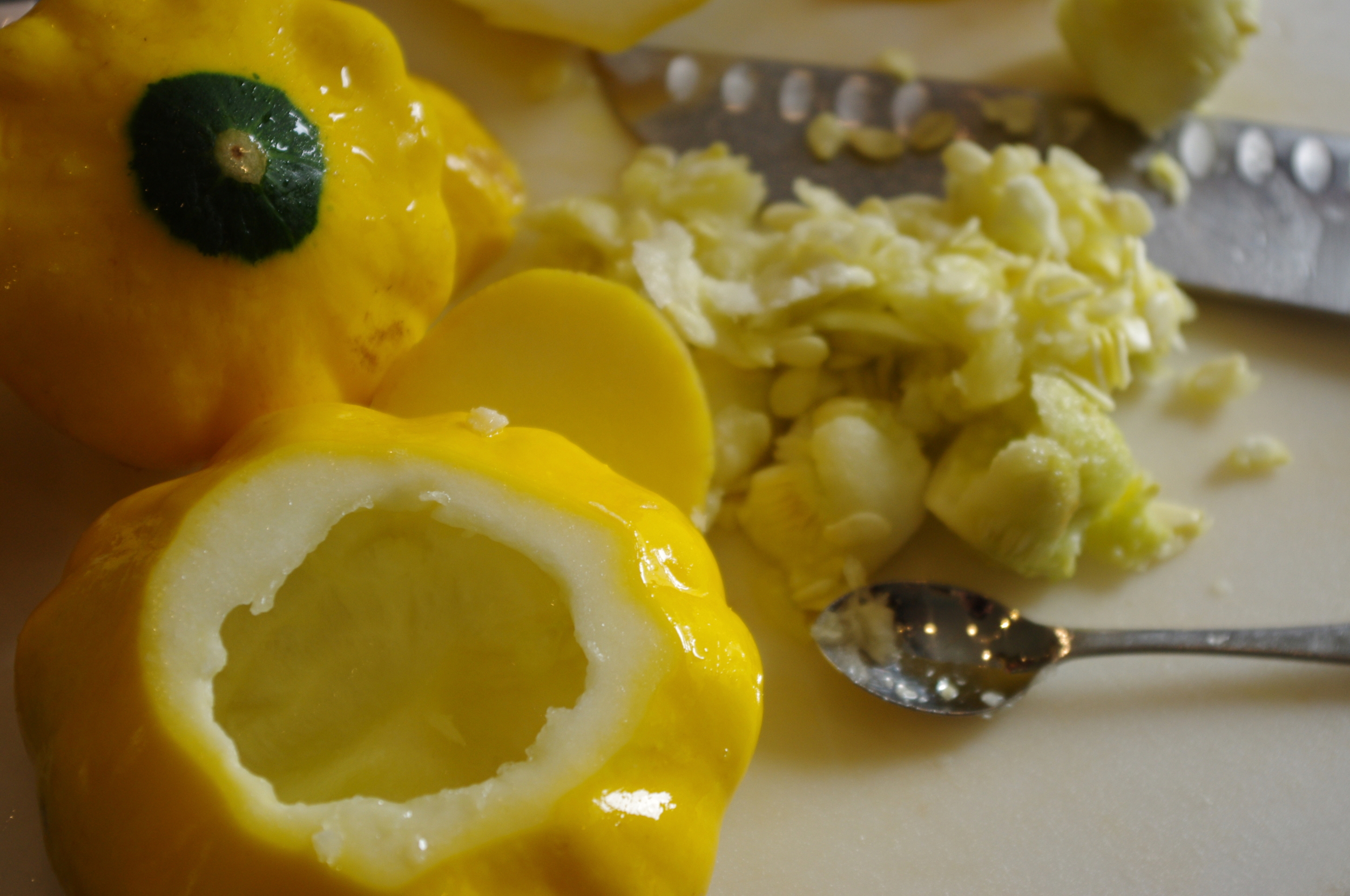Ingredients:
8-10 Pattypan squash
1 lb Grass-fed ground beef
1 Large yellow onion
3-4 Celery stalks
4-6 Garlic cloves
1 1/2 tsp Kosher salt
1 Cup of tomato sauce, or 1 cup of smoky tomato and sweet red pepper ketchup
1-2 Cups of Panko breadcrumbs
2 Eggs
Method:
In a food processor or blender, finely chop the onions, celery and garlic. Combine the finely chopped vegetables with the ground beef, salt, tomato sauce, panko, and eggs.
Remove the stem end of the squash to make a flat surface for the squash to sit in the baking dish. Cut away the blossom end and scoop out the seeds and soft pulp from the middle of the squash.
Stuff the pattypan squash with the meatloaf and place on a baking pan or dish. Place in the oven on the top rack and broil (550 degrees) for about 5-10 minutes, or until the tops brown. Reduce heat to 350 degrees and bake for about an hour. Baking time is variable depending on the amount of meatloaf in each squash, size of the squash, etc. A meat thermometer inserted into the center of the meatloaf should read 170 degrees when done.
Serve with Smoky Tomato and Sweet Red Pepper Ketchup.
Pottery Courtesy of www.formanpottery.com











